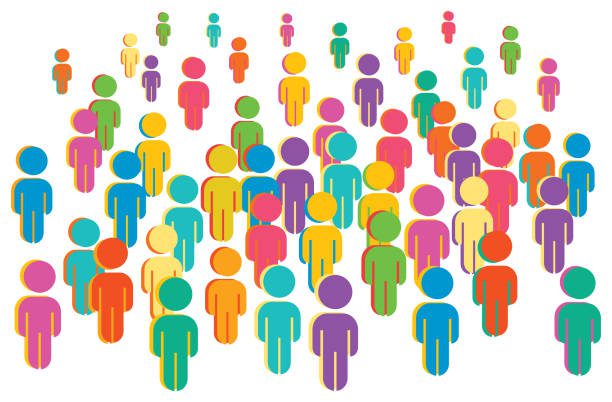Section 1557 Final Rule Explicitly Addresses Intersectional Discrimination for the First Time
What is Intersectionality?
Intersectionality, a theory created by scholar Kimberlé Crenshaw, describes how an individual’s multitude of identities intersect to create unique ways they experience oppression or discrimination. Crenshaw’s original framing of intersectionality centered the experiences of Black women, who were often erased by feminist theory and antiracist policy because race and gender were treated as separate issues. Crenshaw stated that this ignored the reality that Black women, who sit at the intersection of two marginalized identities, experience discrimination based on both identities concurrently. In fact, each identity a person holds contributes to their overall experience moving through the world, the ways they experience oppression, and their individual relationship to power and privilege. Therefore, addressing discrimination through an intersectional lens is imperative to advancing health equity.
Examples of Intersectional Discrimination in Health Care
Intersectional discrimination is incredibly pervasive in health care, resulting in compounding harms for those living at the intersections of marginalized identities. For example:
- Black women are more likely than Black men to report negative health care experiences, including having to speak up to receive proper care, not being taken seriously regarding pain, and feeling like they received lower quality care than other patients. The health care system’s bias against Black patients, particularly Black women, has caused a maternal mortality rate for Black women that is 6 times the rate of white women. A similar trend can be shown in the health status of American Indian/Alaskan Native birthing people, who are 2.3 times as likely as white birthing people to experience death from pregnancy-related conditions.
- LGBTQI+ people of color (POC) are more likely than their white counterparts to experience discriminatory treatment from a health care provider, including substandard care in which they had to educate their provider to receive appropriate care, refusals of care, or even verbal abuse or physical harassment during treatment. Alarmingly, trans, non-binary, and intersex POC experience the highest rates of mistreatment and refusals of necessary care, including reproductive and sexual health services, gender-affirming care, and fertility care. These negative experiences of provider discrimination ultimately lead to LGBTQI+ POC being more likely to delay or avoid necessary medical care.
- Disabled birthing people have an 11 times higher risk for maternal death and also an increased risk for pregnancy-related complications like preeclampsia and hemorrhage. Women with certain health conditions like Sickle Cell Disease, which primarily impacts Black individuals, are also at increased risk for reproductive coercion through permanent sterilization like tubal ligations. Furthermore, LGBTQI+ people with disabilities experience higher rates of provider discrimination than their non-disabled counterparts, and bias and stereotypes about gender dysphoria result in discriminatory refusals of care for trans and non-binary individuals.
- Individuals with limited English proficiency (LEP) report more challenges accessing health care than their non-LEP counterparts, largely due to language barriers. Studies of Latino and Asian patients with LEP demonstrate that discrimination based on race and ethnicity also negatively exacerbates their health care experiences and outcomes. POC are significantly more likely to have limited English proficiency than white people, with Hispanic and Asian individuals making up 62% and 22% of the LEP population respectively. Additionally, about one-third of older Hispanic and Asian adults have LEP and are less likely than their white counterparts to feel comfortable asking providers questions about their health care.
- Older POC are less likely to receive necessary and sufficient health care than their white counterparts. One in four Black and Latinx/Hispanic adults 60 and older reported being treated unfairly or dismissively by health care providers because of their racial or ethnic background. Such discrimination is associated with increased risk of delaying care as well as higher likelihood of social isolation, mental health diagnoses, and overall worse health outcomes.
How Section 1557 Addresses Intersectional Discrimination
Section 1557 of the Affordable Care Act (ACA) is a self-implementing provision that prohibits discrimination in federally funded health programs and activities. On May 6, 2024, the Biden Administration published a final rule to reinstate and expand upon the protections of Section 1557 in its implementing regulations. The 2024 final rule implementing Section 1557 prohibits discrimination on the basis of the following protected classes: race, color, national origin (including language), sex (including pregnancy status and related conditions, sexual orientation, gender identity, sex stereotypes, and sex characteristics, including intersex traits), age, disability, or any combination thereof. While Section 1557’s nondiscrimination protections already reached intersectional discrimination, the 2024 final rule explicitly highlights intersectional discrimination with the addition of the phrase “or any combination thereof” in the regulatory text on prohibited discrimination and available enforcement mechanisms.
By recognizing that an individual may face discrimination on the basis of intersecting identities, Section 1557 brings all protected classes under the jurisdiction of one health care-specific nondiscrimination provision. Prior to Section 1557, different federal civil rights laws provided nondiscrimination protections only for certain protected classes, which failed to address the reality that people often experience intersectional discrimination. This created a siloed system with each civil rights law having different legal standards and requirements to prove discrimination, making it challenging for individuals facing multiple forms of discrimination to enforce their rights. Individuals would have had to file separate complaints and independently prove discrimination on the basis of each of their identities. For example, an older Black woman would have had to file for racial discrimination under Title VI, age discrimination under the Age Discrimination Act, and could not have even filed for sex discrimination since prior to Section 1557, sex discrimination was not prohibited in health care, only in educational contexts.
Section 1557 was designed to provide the full range of available enforcement mechanisms and remedies to individuals seeking to enforce their rights, regardless of whether their discrimination claims were based on one or multiple protected identities. It does this by referring to 4 pre-existing federal civil rights laws to establish the grounds of protected health care discrimination and broadly applying the enforcement mechanisms “provided for and available under” those laws:
- Title VI of the Civil Rights Act of 1964, which protects individuals from discrimination on the basis of race, color, and national origin (including discrimination against individuals with limited English proficiency);
- Title IX of the Education Amendments of 1972, which protects individuals from discrimination on the basis of sex;
- the Age Discrimination Act of 1975, which protects individuals from discrimination on the basis of age; and
- Section 504 of the Rehabilitation Act of 1973, which protects individuals from discrimination on the basis of disability.
Therefore, under Section 1557, claims involving individual or multiple grounds of health care discrimination are now explicitly subject to a single administrative enforcement process. This makes it easier for people to file intersectional claims and recognizes that individuals should have the same rights and nondiscrimination protections for each of their intersecting identities.
Conclusion
The explicit acknowledgment of intersectional discrimination in the 2024 final rule implementing Section 1557 is a critical step towards achieving health equity for all. Now, we must ensure that all people, particularly those living at the intersections of marginalized identities, understand their rights to access health care, free from discrimination and bias.






